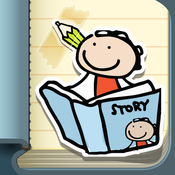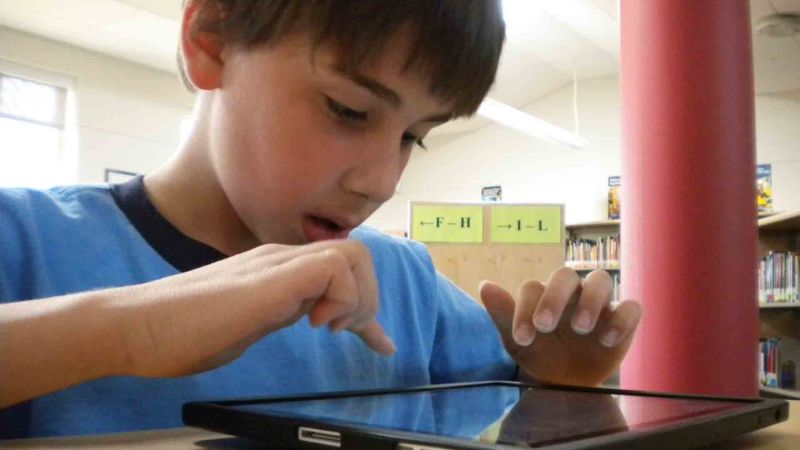 Tell About This
Tell About This
(Elementary)
This versatile pre-writing or publishing tool is easy for young storytellers to use. Dozens of photos sorted into categories including culture, people, family and fun, serve as inspiration for prompts. Kids can tell stories using the in-app recording feature. Teachers can also create custom prompts with their own images and voice. Giving ELLs a safe space to tell stories about their lives and experiences validates their unique contributions to the class community.
 ShadowPuppet Edu
ShadowPuppet Edu
(Elementary/Middle)
Students can create impressive video slideshows using research resources built right into the app. They can capture screengrabs from an interactive map, safely search for images from the Web and access image archives from trusted sources like the Library of Congress. Kids put the slides in order, add text, music and narration, and then export the final project as a video file. Shadow Puppet Edu supports ELLs in developing academic vocabulary in both collaborative groups and independently. Students can use it to review new concepts, present research, track progress, explain their thinking and more.
 Toontastic 3D
Toontastic 3D
(Elementary/Middle)
Just as with the original Toontastic app, Toontastic 3D is a storytelling app that's inspired by puppetry, theater, and animation. It employs a "Story Arc" with five sequential scenes to guide story structure (setup, conflict, challenge, climax and resolution). Kids move characters around each scene as they record narration and dialogue. For ELLs, Toontastic 3D can be an invaluable tool for building writing skills or practicing story analysis. Students can storyboard a piece of original writing or a story they read in class, and then bring it to life with fun settings and quirky characters.
 VoiceThread
VoiceThread
(Elementary/Middle/High)
Students or teachers can create and share media projects that incorporate video, image, voice, or even drawings. Once posted, projects can be open to text, voice or video comments from a select group or from all VoiceThread members. It's a natural fit for a range of student presentations and projects such as explaining research or retelling a story with original artwork. Alternately, teachers can create a VoiceThread to solicit student commentary. For ELLs who sometimes are hesitant to speak up in class, VoiceThread gives them a chance to thoughtfully craft their presentations or comments and contribute their ideas with confidence.
 Explain Everything
Explain Everything
(Middle/High)
This formidable tool is like a superhero version of PowerPoint. Users can import photos, PDF files, movies and more from many sources to use in a presentation. Students can learn how to present information using multiple forms of expression (images, text, video and audio) through digital technology. Students can edit the audio in their presentations, which gives ELLs a chance to self-assess and revise before presenting to their peers and teacher. Plus, allowing students to create multimedia presentations can take some of the focus off the speaking task, and can give creative, tech-savvy students a chance to shine.
 Sutori
Sutori
(Middle/High)
Sutori* is a tool for creating interactive timelines and stories. Students can craft multimedia projects with text, images, videos, “Did You Know” call-out boxes, click-to-reveal text links, and multiple-choice quiz questions. Sutori offers collaboration features, allowing students to co-create stories for group projects as well. Teachers and students can access pre-made stories and view or contribute to a collection of community submitted stories. Sutori is another great option for empowering ELLs to share their stories and knowledge without the stress of an oral presentation.
Erin Wilkey Oh is Executive Editor of Education Content for Common Sense, creator of Graphite, a free service for educators in search of the best apps, games and websites for learning. Tools included here have received high ratings on Graphite by educators and by the editorial staff at Common Sense. Go to Graphite to read full reviews of digital tools and how teachers use them for learning in class.
*This post has been updated to include Sutori.
 Kid in Story Book Maker
Kid in Story Book Maker







